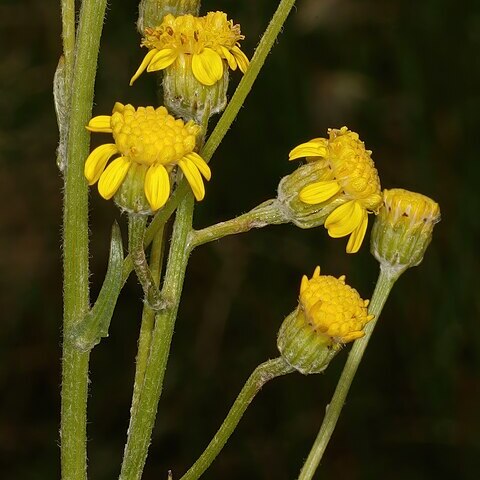Perennial herb, up to 1.3 m high, from thick, woody rootstock, crown silky-woolly and with old leaf bases; flowering stem solitary, simple below inflorescences, loosely cottony or woolly, densely leafy. Leaves: few, basal with blade narrowly elliptic-obovate or oblong, up to 150 x 10 mm, apex acute, narrowed to broad, petiole-like base, expanded, half-clasping, margins closely and minutely callose-denticulate; both surfaces black-punctate, thinly woolly or cobwebby, sometimes glabrescent or hairs persisting at base; stem leaves similar, sessile, base eared, half-clasping, passing into bracts. Heads radiate, up to 40 corymbose-paniculately arranged; peduncles thinly woolly, cottony or glabrous. Involucral bracts ± 12, 6-7 mm long; shorter than disc florets; calyculus bracts few, longest ± equalling involucral bracts; all loosely woolly or cottony or nearly glabrous. Flowers: ray florets (5-)8; ray and disc florets bright yellow; Nov.-Jan. Fruit with cypsela (and ovary) villous.
Perennial herb, up to 1.3 m high. Crown silky woolly. Leaves thinly woolly or cobwebby, sometimes glabrescent or hairs persisting at base; stem leaves oblong or elliptic-lanceolate; leaf margins closely and minutely callose-denticulate. Heads radiate, rays (5-)8; involucral bracts ± 12, 6-7 mm long. Achenes and ovaries villous. Flowers bright yellow.

